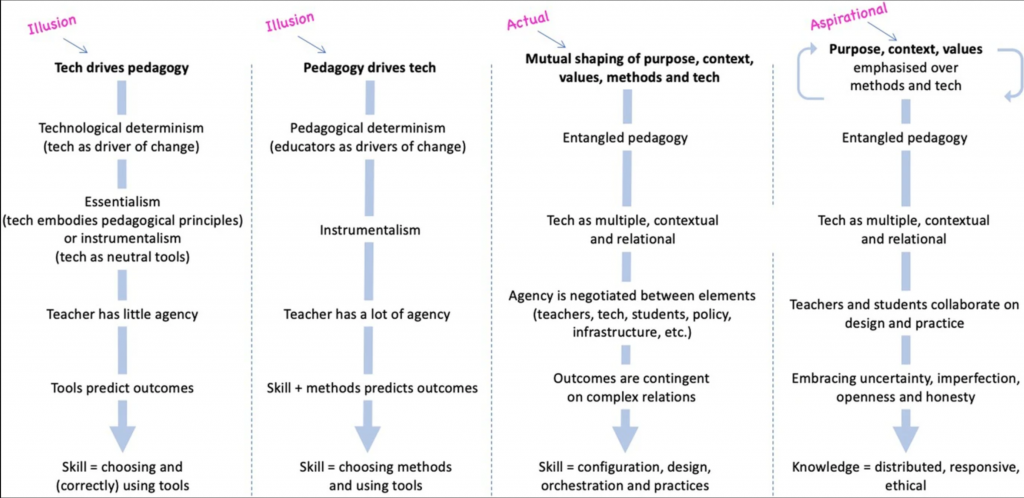Edtech is not a tool
The technologies we use are matters of quality
Type “edtech tool” into a search engine and pages of list articles for the “X best edtech tools” will come flying back at you. There are even whole taxonomies being developed to make sense of this landscape.
The riposte provided to these context-free lists of technologies is usually “pedagogy first” and often accompanied by a picture of a horse and cart of some kind.
This sets up a false dichotomy though (or a thought terminating cliche). Technology and pedagogy are not separate.
“As researchers and practitioners of digital education, we need to move away from our over-emphasis on how technology acts on education, or how education can best act on technology. Let us rather acknowledge that the two are co-constitutive of each other, entangled in cultural, material, political and economic assemblages of great complexity.”
Bayne, S. (2014) What’s the matter with ‘Technology Enhanced Learning’?. Learning, Media and Technology, DOI: 10.1080/17439884.2014.915851. https://doi.org/10.1080/17439884.2014.915851
Pedagogy and technology are not mutually exclusive; they are entangled and mutually shaping. This is a fancy way of saying learning and teaching can be bent out of shape by technology and we can bend technology out of shape for learning and teaching purposes. For good or bad outcomes.
Since technology and pedagogy are entangled in the way that Bayne, Fawns (see right) and many others describe, then it stands to reason that when we think about ideas like quality assurance of digital learning, it becomes impossible to draw a neat line around the “course” and exclude platforms and technologies from this critique. Likewise, critiquing educational technologies from the perspective of student and teacher satisfaction without considering the specific educational context is inadequate.
Taking that a step further, when we think at the level of institutions and sectors, if educational technologies are a material part of learning and teaching, then the ways in which they are selected and implemented should also be a matter of quality assurance.

Summary
- Good use of educational technology is not as simple as picking the right technology and training people on how to use it.
- Quality assurance processes needs to extend beyond what we do within educational technology systems to how we choose them in the first place.